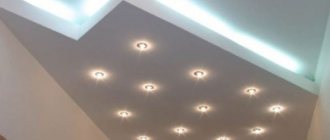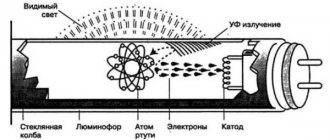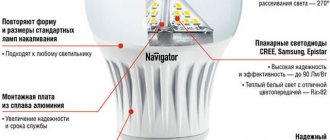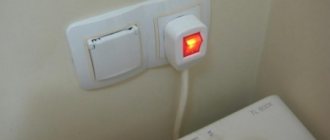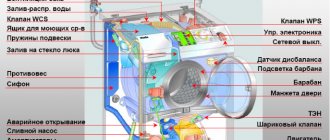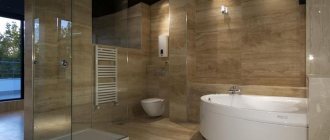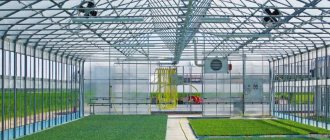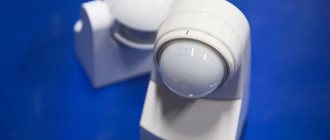Until now, even with the development of innovative technologies and the sharp step forward of science, the most effective and high-quality lighting is provided to humans by nature itself, or rather, the sun. Developers can only strive to bring the indicators of artificial light as close as possible to sunlight. Therefore, it is quite difficult to provide correct, and most importantly sufficient, lighting in rooms that does not spoil vision. Before implementing it, it is necessary to calculate all the lighting in the room.
Basic light requirements
An adult spends about a third of his time at work. He should be comfortable, convenient, during this time he should not overwork and worsen his health. The worker must have safe working conditions, and light also affects this.
The basic requirements for workplace lighting are as follows:
- Optimal brightness that does not affect vision. The light should not be too dim so as not to strain your eyesight, but it should not blind your eyes.
- Illumination uniformity. There should not be many shadows in the workplace. If the main light from ceiling lamps is not enough, then use table lamps, floor lamps or other lighting fixtures.
- Possibility to individually adjust the level of lighting at the workplace.
- Safety for the worker and the production process.
A combination of natural sunlight and artificial light (from lamps) is considered optimal for lighting. This method of lighting offices is called combined or mixed.
Dependence on types of lamps
The type of luminaires has a significant impact on the relevant regulations.
Halogen lights are not allowed everywhere
For the purpose of illuminating the interior of a structure, discharge lamps are usually used. They are the most economical. If they cannot be installed, then incandescent lamps should be used. They can also be used if discharge lamps are not economically feasible.
You might be interested in How to calculate the inductance of a coil
For your information . These light sources are suitable for local lighting. Along with them, the use of halogen lamps is also allowed.
According to SanPiN standards, the use of xenon lamps in buildings is prohibited.
Illumination norms and standards
It is not the employee himself or his employer who determines what the correct lighting for the workplace should be. The standards are regulated by regulations, which set the permissible brightness level in Lux.
- SNiP - building codes and rules for lighting design;
- SanPiN - sanitary rules and regulations, which include all occupational hygiene, including light hygiene;
- GOST R 55710-2013 - regulates lighting standards inside buildings.
In production, labor safety must be monitored by a certain specialist; sometimes, if the organization is large, an entire department is created for this purpose. The responsibilities of this employee include, among other things, monitoring compliance with workplace lighting rules.
The level of light varies depending on the type of work being performed. Types of production are divided into high-precision, medium-precision, and low-precision labor. The lighting used in high-precision manufacturing workplaces differs from that in low-precision workplaces. Below are the brightness standards depending on the required accuracy:
- highest accuracy - 5000 Lux;
- very high - 4000 Lux;
- high - 2000 Lux;
- medium - 750 Lux;
- small - 400 Lux;
- rough - 200 Lx.
The table shows lighting standards depending on the type of office space:
| Room | Standards, according to SNiP |
| Office with computers | 200-300 Lux |
| Server room | 400 Lux |
| Operations or cash room | 400 Lux |
| Large open-plan office | 400 Lux |
| Visitor's room | 300 Lx |
| Cabinet for drawing work | 500 Lux |
| Photocopying room | 300 Lx |
| Conference hall | 200 Lx |
| Flights of stairs and escalators | 50-100 Lux |
| Hall, corridor, vestibule | 50-75 Lux |
| Archive | 75 Lux |
| Pantry | 50 Lx |
Lighting requirements for rooms with a computer
Office spaces where computers are used have special requirements. The reason is the additional exposure of the eyes to light from the monitor, which must be compensated for by artificial lighting.
In rooms using computer equipment with displays, the brightness of the general light should be at least 200 Lux. If computers are on a desktop, then the level of combined lighting should be 500/300 Lux, and artificial lighting - 400 Lux.
The optimal way to place a workstation with a computer is perpendicular to the window, and the window should be to the left of the worker, or at least to the right. It is not allowed to sit with your back or face to the window. If sunlight and general light are not enough, then local lighting in the form of a floor lamp can be installed on the table, the light of which should fall from above the monitor.
Continuous work on the computer is prohibited. During the daytime, the maximum continuous operation time is 2 hours. In the dark - 1 hour, after which you need to take a 10-15 minute break and it is advisable to do eye exercises.
There are also certain requirements for lamps. The pulsation coefficient should not be more than 10%, and the color rendering index should not be less than 80%. For example, LED lamps comply with these standards. LED lamps are placed at a distance of 50-60 cm from the monitor. Their light should not shine directly onto the monitor or into a person’s eyes. It is best to use lamps with diffused yellow light.
Proper illumination of the workplace ensures high productivity and satisfaction of specialists. By observing the basic norms and rules, the employer provides its employees with comfortable conditions that not only increase the performance of each individual team member, but also contribute to maintaining health.
Auxiliary methods for determining room illumination
In addition to the basic mathematical method of determining the lighting level for the required area, there are more simplified options, which are also regularly used at home.
Calculation by specific power
Calculation using a prototype. This method is quite simple, since all the data is available in tables typical for typical premises. This option is convenient for domestic conditions. There is no point in using calculations of a more professional type for everyday life.
We advise you to study the division of circuit breakers according to time-current characteristics
Spot calculation of illumination. Using this calculation, it is possible to obtain a value for each individual point in the room. However, this type of calculation requires lengthy preparation: it is necessary to have a room plan with markings of lamps, according to which you should select a point that serves as a calculation point. This option is complex and is used for difficult conditions or with design features of wall or ceiling surfaces.
Legislation
There are legislative acts that specify standards for lighting the work area. Thus, the requirements for workplace lighting can be found in:
- in GOST 55710-2013, SP 52.13330.2016 (updated edition of SNiP 23-05-95) - these standards are also used in the design of premises;
- SanPiN 2.2.1/2.1.1.1278-03 applies to the organization of workplaces in already constructed buildings. It is important to know that regulatory inspections are carried out for compliance with SanPiN.
How is illumination measured?
Calculation of the illumination norm is carried out in lux (lx). Lux is 1 lumen per m², therefore, in the developed rules, the standard of illumination in industrial premises is presented in this unit of measurement.
For example, many employees use PCs when performing their professional duties. A room that is not properly equipped with lighting devices may experience:
- drop in visual acuity;
- eye fatigue;
- itching and dry eyes;
- general psycho-emotional irritation;
- pathological phenomena in the nervous system (for example, the appearance of insomnia).
Measuring rules
Measurements can be taken using a special device. It's called a lux meter. It works on the principle of a photometer. There are analog and digital devices on the market. It must be kept horizontally. The measurement rules for each type of space are prescribed in GOST.
Luxmeter helps with measurements
The accuracy of the instrument readings is influenced by several factors:
- The presence of additional light sources.
- Violation of the immobility of the device during the measurement.
- The presence of interference during measurements (for example, the movement of people, reflecting animal materials in the immediate vicinity of the device).
Street lighting standards
The luminous flux hits the photocell. Electric current begins to flow through it. The magnitude of the electric current is in direct proportion to the illumination of the photocell. This value is reflected on the scale or shown as a digital value on the display.
State standards establish methods for calculating illumination, as well as layout diagrams of those points at which measurements are taken.
Standards for illumination of residential premises with LED lamps
Measurements of artificial and natural light should be carried out separately from each other. It is important to ensure that there is no shadow on the device. Also, the presence of a source of electromagnetic radiation should not be allowed nearby.
Based on the results obtained during measurements, calculations of illumination indicators are made. There are special formulas for this. The final step is to conduct a general assessment. The essence of this stage is to compare the actual indicator with the standard one. Based on this comparison, a conclusion is made about the sufficiency of lighting at the object under study.
You might be interested in this: Features of the power supply project
For your information . If you don't have a lux meter, you can use a regular camera for this purpose.
Types of workplace lighting
Most workspaces have three main light sources. Let's look at them:
- natural light is the most comfortable for human eyes. Its quality depends on the design of the building and the number of window openings;
- a mixed type is used if natural alone is not enough. In this case, additional light sources come to the rescue. Currently, LED and fluorescent lighting devices most often play this role. Incandescent lamps are losing ground;
- artificial provides illumination of premises with artificial light using electric lamps, if natural light is not available at all. This type is divided into several varieties: working, emergency, security and duty.
Calculation of natural light
This calculation of room lighting comes down to determining the area of the openings, that is, the size of the windows and their number. In this case, it is worth considering the location of the room, since there is a sunny and non-sunny side. Trees or other objects that shade the sun are also of great importance for this. An apartment building often already has window openings and in most cases this natural light is enough, sometimes even too much sunlight.
We advise you to study How to test a resistor with a multimeter
If you organize, calculate and design lighting at a professional level, it is recommended to purchase a special digital device that will accurately determine the illumination in a room or on a site, it is called a lux meter. These products are not rare and can be easily purchased in specialized stores.
What is the basic lighting requirement
Each enterprise must meet the following requirements:
- The lighting in the workplace of each employee must be sufficient. This is necessary to ensure comfortable working conditions. In addition to artificial light, the presence of natural light sources is desirable.
- The additional light sources used must be safe - this rule applies to electric lamps. They should also not cause discomfort (that is, the light should not be too dim or bright). The range of lighting devices is quite wide: there are wall-mounted, ceiling-mounted, table-top devices, etc. By combining different types of lamps, you can achieve optimal working conditions for the entire team. Also, ideally, each worker should be able to adjust the light to suit themselves.
- The space must have uniform illumination - objects and items with different reflectivity and brightness must be fully perceived by the organ of vision. The presence of a negative influence of light on human vision is unacceptable.
As a conclusion, we note that when selecting lighting, the employer will have to analyze dozens of documents. Therefore, the best option is to use the services of licensed specialists with extensive experience in this field.
1.5. Lighting quality
The quality of lighting is characterized by a large number of characteristics, largely interrelated, including:
· degree of limitation of direct and reflected brightness;
· constancy of illumination: this refers to both changes occurring due to deviations and voltage fluctuations, and pulsations of the flow of gas-discharge lamps powered by alternating current;
· spectral composition of light, determined by the choice of light sources;
· brightness of surfaces that are in the field of view, but are not working;
· depth and character of shadows;
· direction of light;
· uniformity of lighting (standardized only for streets and roads).
In some cases, the required quality of lighting is achieved by special techniques: translucent lighting, lighting with large surfaces, artificial background, colored light, etc.
For industrial premises, limiting the glare created by direct glare is achieved by normalizing the glare indicator P
, characterizing a decrease in contrast sensitivity when exposed to glare.
P value
not limited to:
· for rooms no more than two heights of lamps above the floor;
· for categories VIIIb, VIIIc, IXb, XIIIa, XIIIb;
· for categories X, XI, XIIa, XIIb, XIIIc - with lamps with a protective angle of at least 15° or with diffusers with an overall brightness in the 60-90° zone of no more than 4 cd/m2;
· for rooms with a height of up to 2.5 m when performing work of categories VI and VIIIa or during temporary stay of people and for all areas intended for passage or maintenance of equipment, when using lamps with a protective angle of at least 15° for incandescent lamps and no more than 150 W, for DRL lamps no more than 250 W and fluorescent lamps with a total power of no more than 80 W; lamps with frosted and milky diffusers without reflectors for incandescent lamps not exceeding 100 W; open incandescent lamps no more than 60 W in a milk flask and fluorescent lamps no more than 40 W.
Table 1.5.1. Glare indicator in production and auxiliary premises
| Work category and subcategory | Indicator of blindness when people are in the room | |
| permanent | temporary | |
| I, II | 20 | — |
| III, IV, V, VII | 40 | 60 |
| VI, VIIIa, IXa, X, XI, XIIa | 60 | 80 |
| Notes. 1. Cases in which the blindness indicator is not standardized are indicated in the text. 2. The indicator should be determined under the outermost lamp of the middle row or one of two rows, along the axes of vision or the long side of the room, and with fluorescent lamps, if the axes of vision are directed across the rows of lamps or the length of the room is less than 5 times the height of the suspension, in the middle of the outermost a row of lamps against the wall, in a direction across the rows. | ||
On stairs, the luminous parts of the lamps should not be visible within the corner
±10° to the horizon. Open fluorescent lamps with a total power of no more than 40 W in the luminaire are allowed.
Local lighting lamps must have a protective angle of at least 30°, and when located below eye level, 10-30°.
Rice. 1. Protective angle of the lamp
:
h - distance from the lamp filament to the level of the lamp outlet;
R is the radius of the lamp outlet; r is the radius of the lamp filament ring; b - protective angle The protective angle of the lamp is the angle formed by the horizontal passing through the filament body of the lamp and the line connecting the point of the filament body with the opposite edge of the reflector.
When the network voltage changes by 1.5%, the eye notices fluctuations in illumination. The frequency of voltage fluctuations in the lighting network in the range from 1.5 to 4% should not exceed 10 fluctuations per hour, and with voltage changes exceeding 4%, the frequency of fluctuations should not exceed 1 fluctuation per hour.
Lamps must be installed so as to prevent them from swinging or spontaneous movement. Combined power supply from one network of lighting installations and power consumers is possible if welding machines, large electric motors with frequent starting or reversing, and other consumers with powerful shock loads are not connected to it.
For public buildings, the discomfort index M
, characterizing additional visual strain in the presence of high brightness.
The value of M
is not limited for rooms with a length of no more than double the height of the lamp above the floor, for passages, corridors, dressing rooms, sanitary facilities, storerooms, stairs and rooms for short-term stays of people.
The apparent degree of saturation of a room with light is largely determined by the value of cylindrical illumination, the recommended values of which are indicated in table. 1.5.2.
Limitation of reflected glare is achieved mainly by appropriate choice of light direction, use of diffuse lighting or illumination of large luminous surfaces.
Increasing the brightness of room surfaces, in particular walls and ceilings, is advisable when their reflection coefficient is high and is achieved by using lamps that emit part of the luminous flux into the upper hemisphere. The presence of such radiation also softens shadows.
Table 1.5.2. Lighting quality indicators for public buildings
| Desired level of light saturation in the room | Recommended cylindrical illumination, lux | Conditions for visual work | Acceptable level of discomfort |
| Large (for example, meeting rooms) | 150 | The preferred direction of the line of sight is upward at an angle of 45° to the horizon (hospital wards, etc.) | 25 |
| Elevated (auditoriums and foyers of theaters, trading floors of department stores, etc.) | 100 | High precision work (design offices, reading rooms, etc.) | 40 |
| Normal (assembly halls, cinema foyers, etc.) | 75 | General overview of the space without the need to distinguish small objects (foyers, lobbies, etc.) | 60 |
| Note. Indicators are determined at the end wall on the central longitudinal axis at a height of 1.5 m from the floor. | |||
Table 1.5.3. Installation height of luminaires in the territories of industrial enterprises and in places where work is carried out outside buildings according to the conditions for limiting glare
| Lamp | Total luminous flux of lamps installed on one support, lm | Minimum installation height of luminaires, m, with lamps | ||
| incandescent and sodium | DRL and DRI | luminescent | ||
| With incandescent lamps, DRL and DRI, having a conditional protective angle of at least 15°, and with fluorescent lamps, regardless of the protective angle | 6 | 6 | 6 | |
| 5000—10000 | 6 | 6 | 6,5 | |
| 10000—20000 | 6,5 | 7 | 7,5 | |
| 20000—30000 | 7,5 | 8,5 | 9 | |
| 30000—40000 | 9 | 10 | 10,5 | |
| >40000 | 10,5 | 11 | 12 | |
| With incandescent lamps, DRL and DRI, having a conditional protective angle of at least 15°, and wide light distribution with mirror and prismatic systems | 7 | 7,5 | 6 | |
| 5000—10000 | 8 | 8,5 | 6,5 | |
| 10000—20000 | 9 | 9,5 | 7,5 | |
| 20000—30000 | 10,5 | 11 | 9 | |
| 30000—40000 | 12 | 12,5 | 10,5 | |
| >40000 | 13,5 | 14 | 12 | |
| Notes. 1. The installation height of luminaires with any lamps with a protective angle of at least 15° or lenses without reflectors is not limited when lighting areas for the passage of people or equipment, pedestrian paths or entrances to buildings. | ||||
Table 1.5.4. The lowest height of outdoor lighting fixtures on streets and roads of category B and in lighting installations for which average illumination is standardized
| Characteristics of the lamp | Maximum luminous flux of lamps of one lantern, lm | Minimum installation height, m | |
| incandescent lamps | gas discharge lamps | ||
| Crowning diffused light fixtures | 3,0 | 3,0 | |
| >6000 | 4,0 | 4,0 | |
| Semi-wide light distribution luminaires | 6,5 | 7,0 | |
| 5000—10000 | 7,0 | 7,5 | |
| 10000—20000 | 7,5 | 8,0 | |
| 20000—30000 | — | 9,0 | |
| 30000—40000 | — | 10,0 | |
| >40000 | — | 11,5 | |
| Wide light distribution luminaires | 7,0 | 7,5 | |
| 5000—10000 | 8,0 | 8,5 | |
| 10000—20000 | 9,0 | 9,5 | |
| 20000—30000 | — | 10,5 | |
| 30000—40000 | — | 11,5 | |
| >40000 | — | 13,5 | |
Table 1.5.5. Standards for quality indicators of lighting of streets, roads and squares of populated areas
| Index | Standardized value, no more |
| Glare indicator for streets, roads and transport zones of areas of category A&B | 150 |
| Ratio of the highest to the lowest brightness of coatings with normalized average brightness, cd/m2: >0,6 ≤0,6 | 3,0 5,0 |
| The ratio of the greatest horizontal illumination to the average at the average illumination rate, lux: >6 4—6 | 3,0 5,0 10,0 |
Requirements for workplace lighting - norms and rules.
If you follow a few basic rules for lighting your workplace, this will reduce fatigue, increase productivity and keep you working longer.
Let's look at these principles and basic knowledge that should be initially applied when designing and installing lighting in the work area at work, at home, in the office.
The first thing you need to focus on is compliance with lighting standards. According to regulatory documents GOST R 55710-2013 and SanPiN 2.2.1/2.1.1.1278-03, the average illumination in workplaces with constant presence of people must be at least 200 Lux.
There are also more stringent requirements set out in the European Union standard EN 12464. Here are the average illumination values for workplaces in offices from there:
How to achieve these parameters and choose the right number and power of lamps?
Of course, there are special complex programs for this (DIAlux, etc.), but if you are not a professional designer, but an ordinary user, then the calculation can be done somewhat differently and much faster.
Let's take the well-known formula for calculating illumination and multiply it by a correction factor.
This coefficient means the amount of light that directly reaches the illuminated surface. If you have more than one powerful directional lamp above your workplace, then it is quite natural that some of the rays from the light source will spread on all sides and not reach the work area.
Therefore, on average we will take it equal to 0.5.
That is, we will assume that approximately half of the light reaches our working surface.
Next, we measure the area of the working area. After this, we find from the passport data on the packaging or from tables on the Internet the value of the luminous flux of the selected lamp.
Substituting all this data into the formula, we get the result of the illumination that this light bulb will provide in this particular place. According to GOST requirements, you need to provide 200Lx.
Accordingly, divide these 200 lux by the result, and you will find out how many such lamps or light bulbs you need.
It turns out that in order to calculate the illumination, you need to know at least two quantities:
- luminous flux from light source
- lighting area
I repeat that this is a very rough and approximate calculation, but it is better than none at all.
To check the actual illumination after installing the lamps, special measuring instruments are used - lux meters.
Once you've achieved the required illumination, that's only half the battle. Don't forget that without regular cleaning of fixtures, walls and ceilings, it may decrease over time.
The number of cleanings of lamps per year for industrial premises is strictly regulated.
The same applies to natural light coming through the windows. Without regular glass cleaning, the illumination in any room decreases.
At the same time, when choosing the color of walls and ceilings, it is advisable to initially focus on light shades.
Don't forget that all surfaces, in addition to absorbing, also reflect light. Here are the recommended reflectances for walls, ceilings, floors and countertops.
A course to improve air purity
Production capacity is constantly growing across the planet, which means air pollution is increasing. The only way out of this situation is the parallel modernization of enterprises and the improvement of technologies and measures for cleaning the air basin.
We advise you to study kW to LS - how to translate correctly
It is important to remember that improving air filtering devices is not a panacea for all the ills of dust pollution. One measure is not enough - the approach must be comprehensive
For example, it is necessary to seal all equipment, introduce remote control methods, replace dry production processes with wet ones and, of course, constantly carry out vacuum cleaning.
The ideal means of combating dust is the introduction of closed air cycles, which allow creating waste-free production. In this case, harmful emissions do not penetrate into the environment, but are collected for further beneficial use. The possibility of using this technology is available in almost all types of production.

